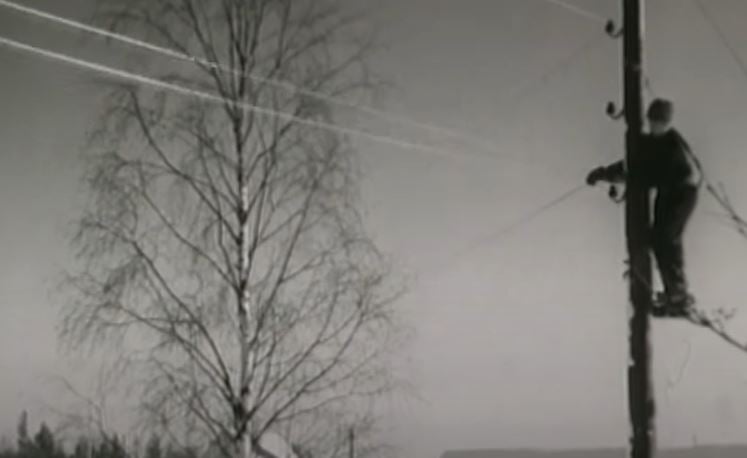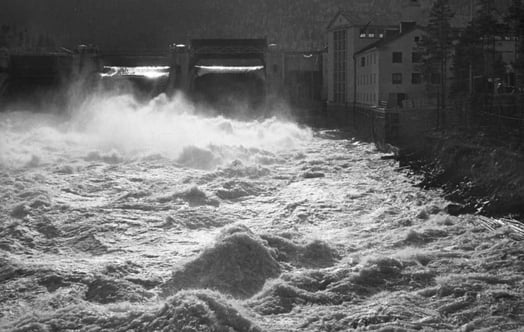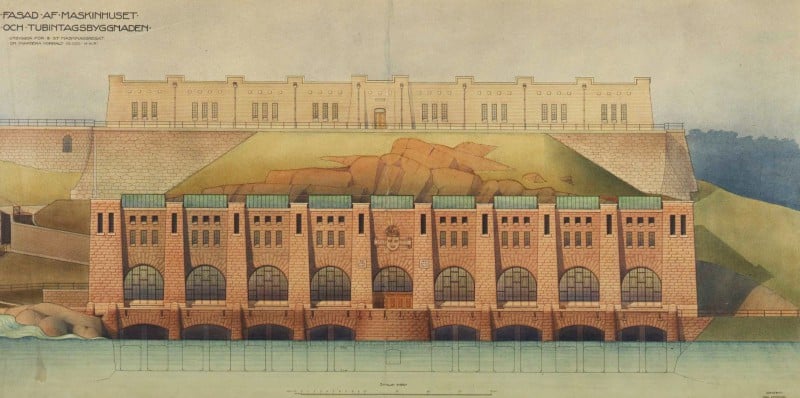
Distribution – from competition to monopoly
Initially electricity distribution was characterised by competition and virtually a 'wild west' situation. Each power company set up their own lines. But increasing consumption of electricity forced standards, collaboration – and a monopoly.
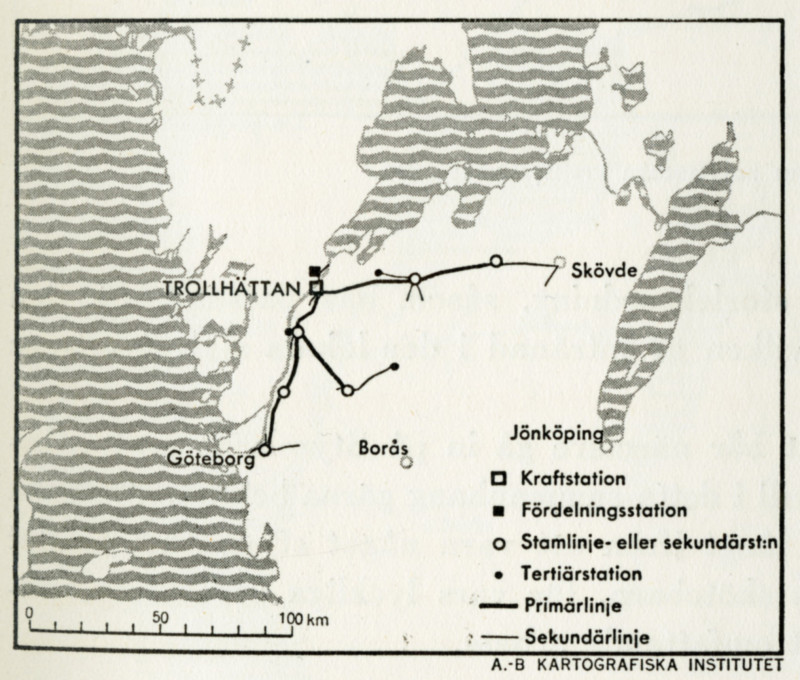
Vattenfall's power system in 1911. From the book 'Kungliga Vattenfallsstyrelsen 1909-1934'. Year: 1911 | Place: - | Creator: Okänd | ID: VF001042
During the early years of electricity, usage was very local. The distance between production and consumption was seldom far. For example, Korsnäs and Marmas sawmills in Gästrikland were first off the block in 1876, followed by Härnösand's DC power plant for street lighting in 1885. The first Swedish city with an electric plant that supplied power to the public was Gothenburg. It was formed by a private company in 1884, but soon went bankrupt. Operations continued at other private companies competing with each other. The lines were laid in all directions over rooftops, and to create some kind of order, the electricity distribution system in Gothenburg was monopolised as a municipal utility in 1908.
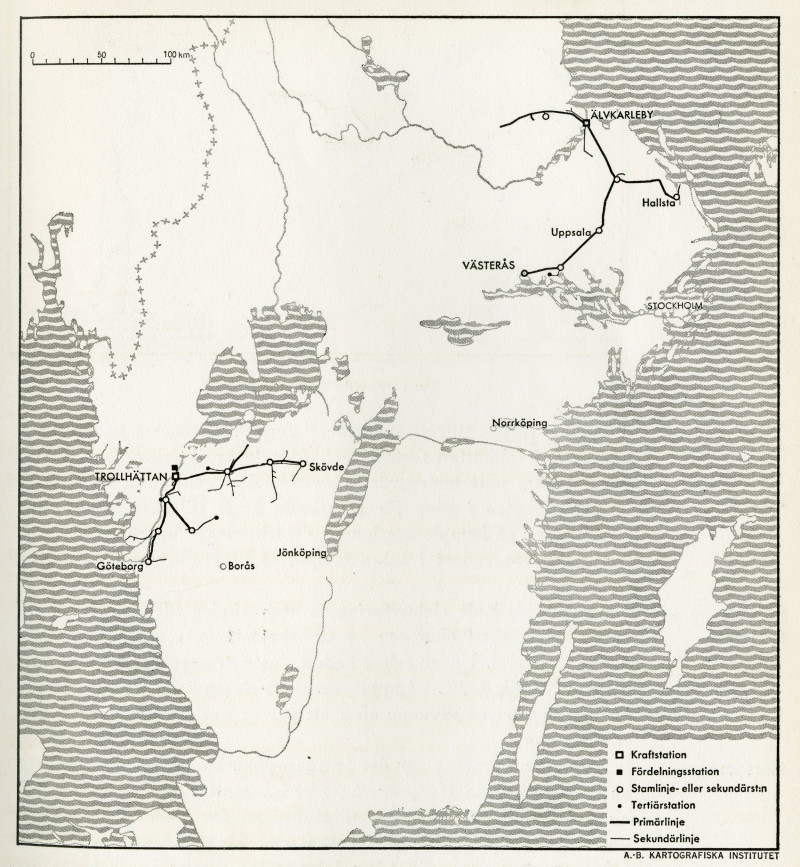
Vattenfall's power system in 1916. From the book 'Kungliga Vattenfallsstyrelsen 1909-1934'. Year: 1916 | Place: - | Creator: Okänd | ID: VF001043
Municipally run electricity plants were also the most common solution throughout the rest of Sweden. The first was founded in Växjö and was able to start supplying electricity in 1887. There were close to one hundred municipal electricity plants in Sweden by 1910. These usually produced electricity by means of steam power stations.
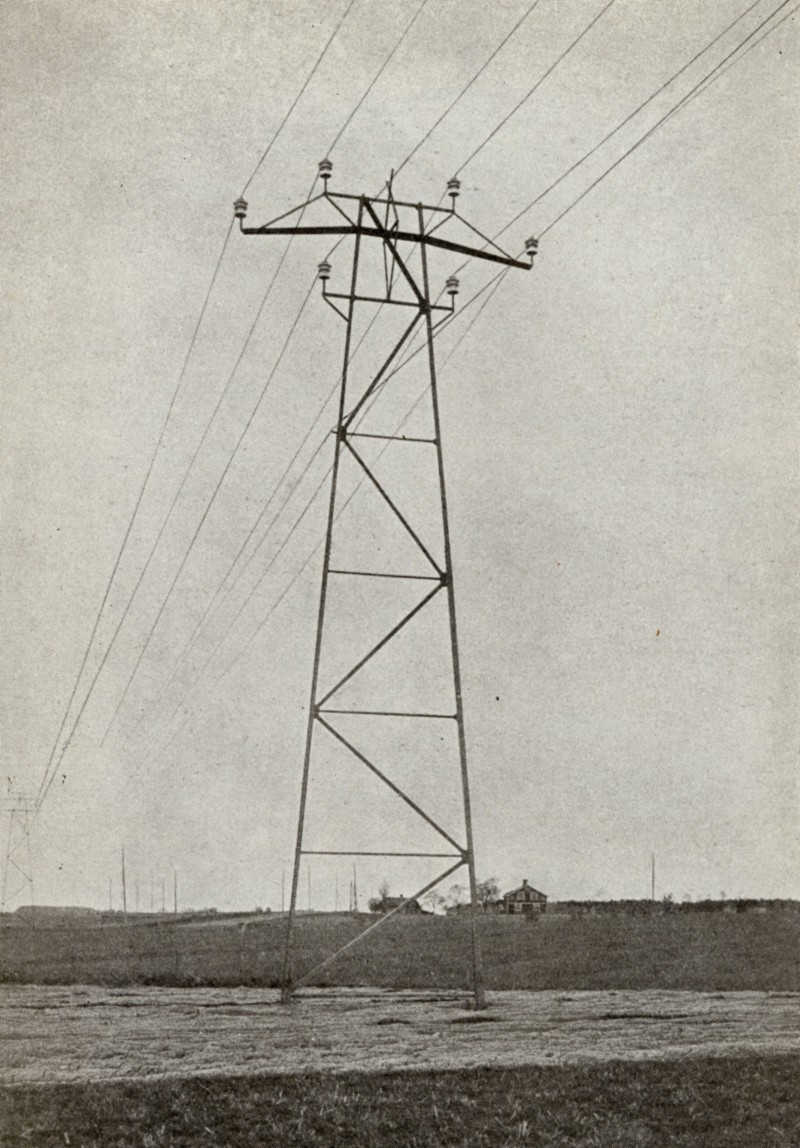
Power line between Trollhättan and Skara. From the book 'Statens kraftverk 1921: allmän beskrivning'. Year: 1921 | Place: Trollhättan | Creator: Okänd | ID: VF001031
Within industry, electricity was often generated using hydropower instead. In many cases, factories and mines had their own hydropower plants. Horndals Järnverk was one of the first, with the Näs hydropower plant in the river Dalälven. Companies focused solely on power production rose to prominence during the first decade of the twentieth century, when Sydsvenska Kraft AB, Yngeredsfors AB and Kraft AB Gullspång-Munkfors were formed.
Over time ever higher voltage could be transmitted, resulting in more extensive grids that could cover larger areas. When the regional grids were expanded, competition was once again the order of the day, this time between power companies. The first company on site with a regional line in practice ended up with a monopoly on electricity supply in the area. This was true, for instance, of Vattenfall's 50 kV grid from Trollhättan to Skara and Gothenburg, and the 70 kV lines constructed from Älvkarleby in the direction of Hedemora and Västerås. The task of supplying Skara was won by Vattenfall in competition with Kraft AB Gullspång-Munkfors. But that also forced Vattenfall to build a provisional hydropower plant in Trollhättan, until the large Olidan plant was ready.

Trollhättan power plant. Year: 1910 | Place: Trollhättan | Creator: Vattenfall | ID: VF000059
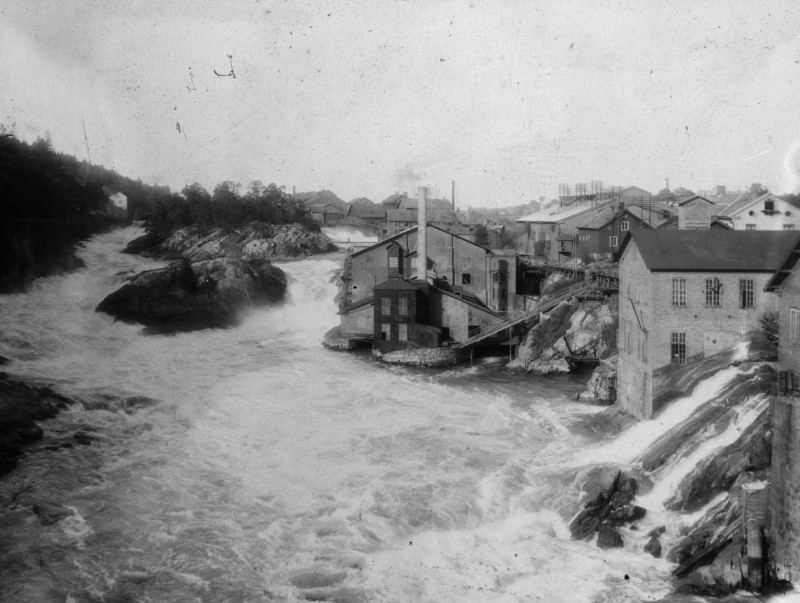
Trollhätte streams. Year: 1900 | Place: Trollhättan | Creator: Vattenfall | ID: VF000057
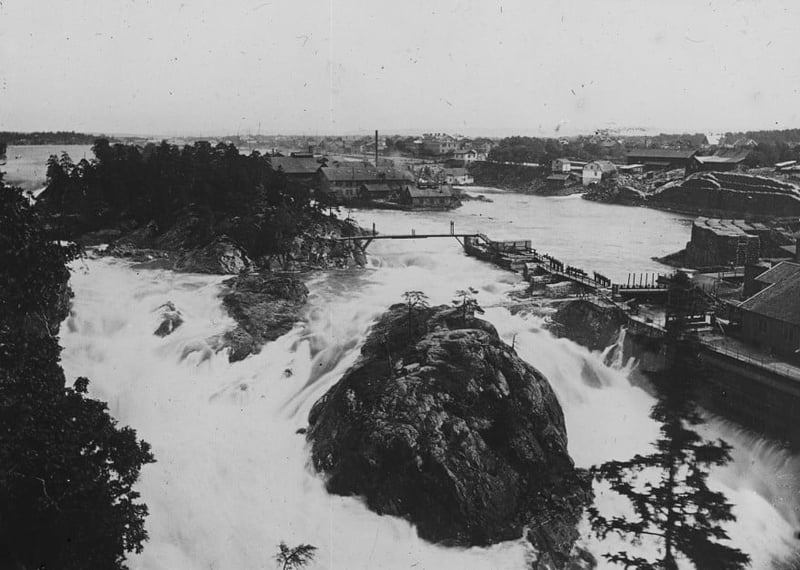
The Toppö falls, Trollhättan Year: 1887 | ID: VF000056
Expensive with no standards
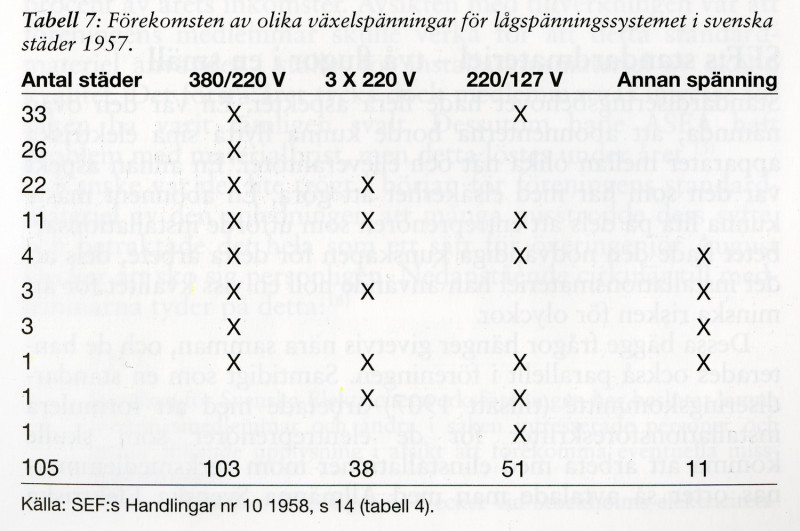
Voltage AC grids as divided by cities. The different kind of voltages in AC grids used in relation to the number of cities they were used in. Year: 1957 | Place: - | Creator: Okänd | ID: VF200001
When the expansion of the distribution grids in cities and towns began, direct current was used. As a result, the voltage transmitted could vary from place to place. The lack of standards caused significant costs and problems for both distributors and customers when it was time to switch to more rational AC systems. It was not until 1928 that Stockholm decided to distribute electricity in the form of alternating current, and to gradually replace the DC grids. As late as the end of the 1950s, 26 of Sweden's (then) 134 towns still had DC electricity distribution. Reorganising the systems previously put in place was costly.
There were no standardised voltages for AC grids either. In 1923, for instance, there were at least five different levels for households in Sweden. Compare this to today, when all households in Sweden have 230 volts. Naturally, this caused huge inconvenience for customers when they moved home, for instance. Household appliances might well not be suitable for their new home. Safety was also affected, as electricians needed to take a number of factors into account in installation work.
When electricity systems developed from local to regional systems, the question of standardising cycles, or frequency, became relevant. The most common frequency was 50 Hz, but in Stockholm, for instance, 25 Hz was also used in certain circumstances. It was only in 1928, during the transition from DC to AC, that Stockholm also decided to exclusively use 50 Hz. This would increase scope for cooperation between the various power plants in the river Dalälven. The growth and regionalisation of the electricity system therefore justified standardisation in terms of frequency.
Back in 1913, during planning for the hydropower plant in Älvkarleby, Vattenfall had decided that 50 Hz would be the standard in future. This solution, which would turn out to be very far-sighted, was pushed hard by then Chief Engineer Waldemar Borgquist. He would go on to become Vattenfall's third Director General. Vattenfall's decision meant that 50 Hz also became the standard throughout Sweden.

Älvkarleby power plant. Generator station and dam building. Year: 1914 | Place: Älvkarleby | Creator: Vattenfall | ID: VF000060
Video player requires marketing cookies.
To view this content please click here to allow marketing cookies.
Electricity distribution in the countryside in 1956 (in Swedish)
Video player requires marketing cookies.
To view this content please click here to allow marketing cookies.
Building an overhead line in the 40s (in Swedish)

